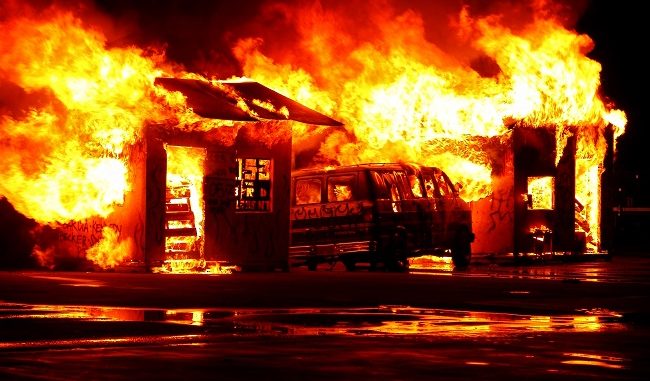
Every home has a fire detection system. This vital safety feature should be well understood. Smoke detectors, carbon monoxide detectors and security systems give homeowners peace-of-mind. Furthermore, when combined with a security system, these devices work together to form a complete home protection plan.
Smoke Detectors
Most homeowners are familiar with battery operated ceiling-mounted smoke detectors. There are two common varieties that work on different principles. A photoelectric detector uses a light source and a photosensitive receiver. When there is smoke in the air, the strength of the light beam that hits the receiver will diminish and trigger the alarm. This type of detector works better at picking up early stage fires, while they may still be smoldering.
The second type of detector is an ionization detector. It uses a small amount of radioactive material to ionize the air in an internal chamber. This in turn, generates a voltage that can be measured. By-products of combustion will change the voltage that is generated and trigger the alarm. This type of detector is better at identifying active combustion with little to no smoke.
While both types of smoke detectors will safely alert a homeowner to a fire, combination alarms exist that employ both methods. Consequently, the responsiveness of the whole system increases. Hard-wired detectors are also available which can be wired to trigger all the alarms in a home if anyone detects a problem.
Carbon Monoxide Detection
In any appliance that uses combustion, such as a furnace or stove top, a potential exists for hazardous carbon monoxide buildup. This by-product is tasteless, odorless, colorless, and highly toxic in large concentrations. Therefore, a carbon monoxide detector is highly recommended. It will monitor the levels of CO in the air and alert inhabitants before they become dangerous. They are available as stand-alone units that can be plugged in to standard wall outlets or as combination roof-mounted CO and smoke detectors.
Security Systems
Home security systems have been around for decades and make use of a combination of sensors including door, window, glass-break, and motion sensors. Historically, these devices were hard-wired and fed back to a central control panel. Many modern systems make use of wireless sensors that allow for easy retrofitting of existing homes. Door and window sensors utilize a small magnet and magnetic strip held open when the door or window closes. If the magnet is moved away, the magnetic strip springs closed and triggers the alarm.
Glass-break sensors are placed near windows and use a microphone to listen for the distinctive frequencies associated with glass breaking. Motion detectors take advantage of a variety of technologies, such as passive infrared, microwave, or ultrasonic. This technology detects something moving within its range. These can be part of exterior security lights or interior motion sensors. Security cameras can also play a role in home security. Install them indoors or outdoors.
Smart Systems
Modern security systems take advantage of internet connected devices to offer a unified home protection system that incorporates smoke/CO detection, cameras, and sensors. These systems are typically accessible from a smartphone or computer. Therefore, it’s possible to check them from anywhere in the world.
With a few taps on a screen, a homeowner can make sure all doors and windows are closed. In addition, homeowners can check if the security system is armed, or even lock and unlock doors with a connected smart door lock. Pull up a live feed from connected security cameras for added peace of mind, or even merely check to see who’s at the door when someone knocks.
When installed and used properly, a home security system can easily increase home safety while reducing the chances of burglary or fire. Most insurance companies offer discounts for home security systems. Because of this, the entire cost of the system may be offset or eliminated altogether. Be sure to ask your insurance company about discounts to homeowner’s insurance for improving or installing a new security system.

